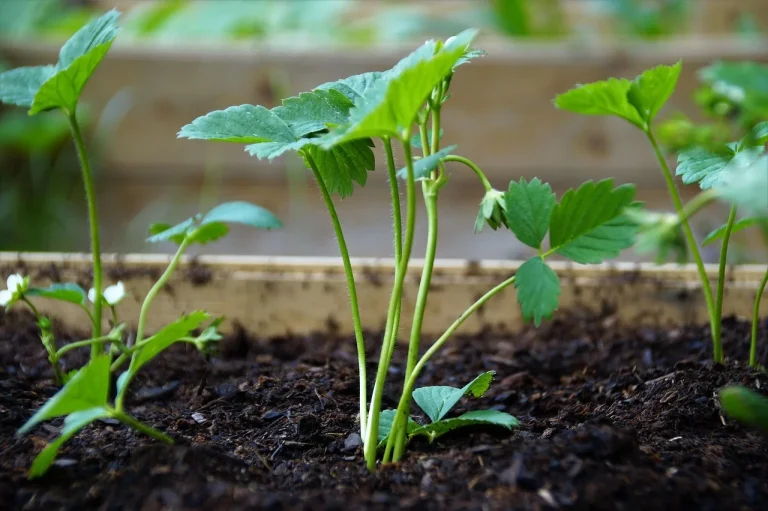Grow strawberries from seeds to enjoy the full satisfaction of nurturing sweet, juicy berries from start to finish. This hands-on method gives you access to rare varieties, strong root development, and a deeper connection to your garden. Unlike nursery transplants, seeds let you control every stage—from germination to harvest—giving you healthier, more resilient plants in the long run. With the right tools, soil mix, and lighting, you can transform a simple seed tray into a thriving strawberry patch. This guide breaks down everything you need to grow strawberries from seeds successfully.
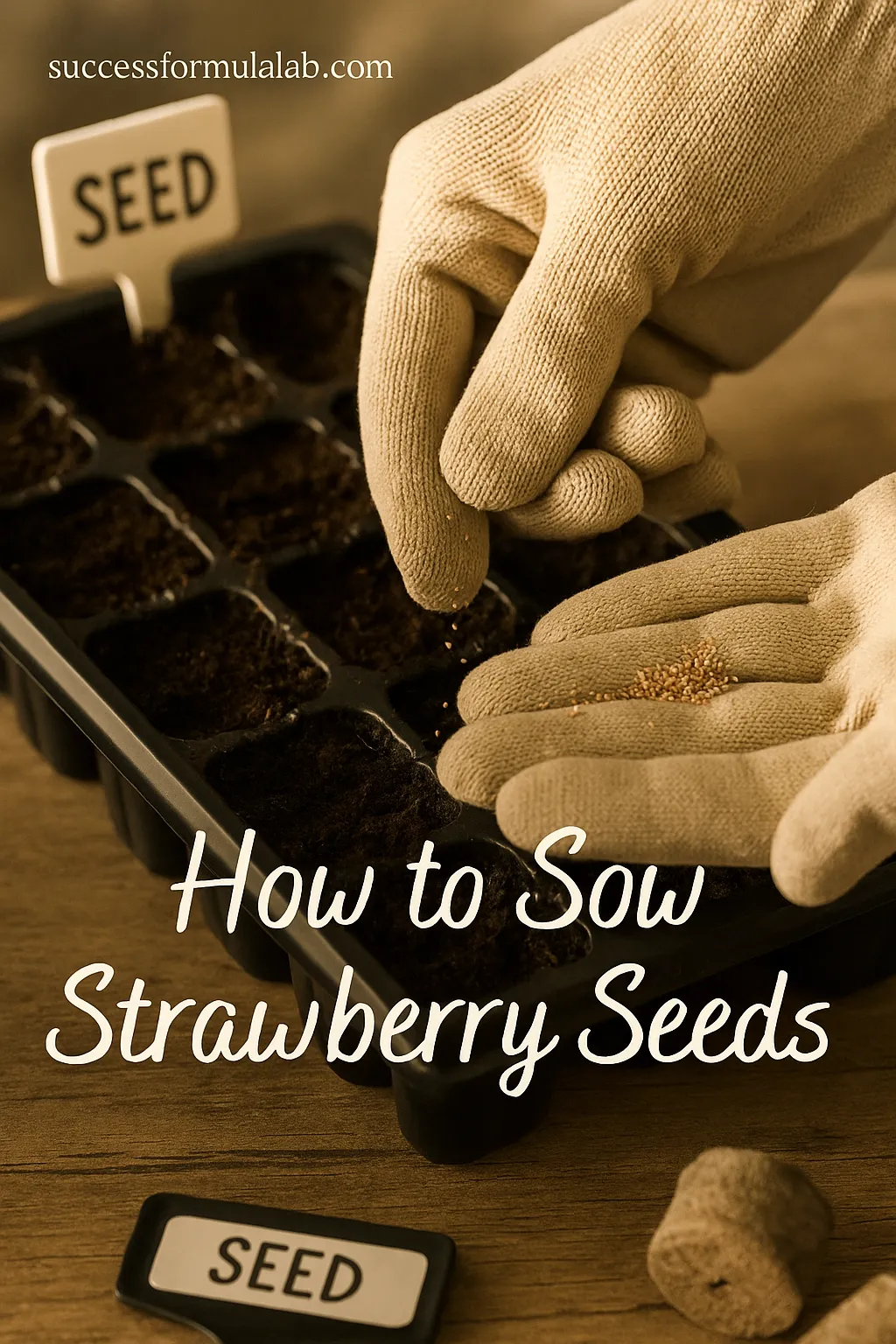
Why Grow Strawberries from Seeds Instead of Transplants?
While many gardeners go straight to bare-root plants or nursery seedlings for convenience, there are good reasons to start from scratch with seeds:
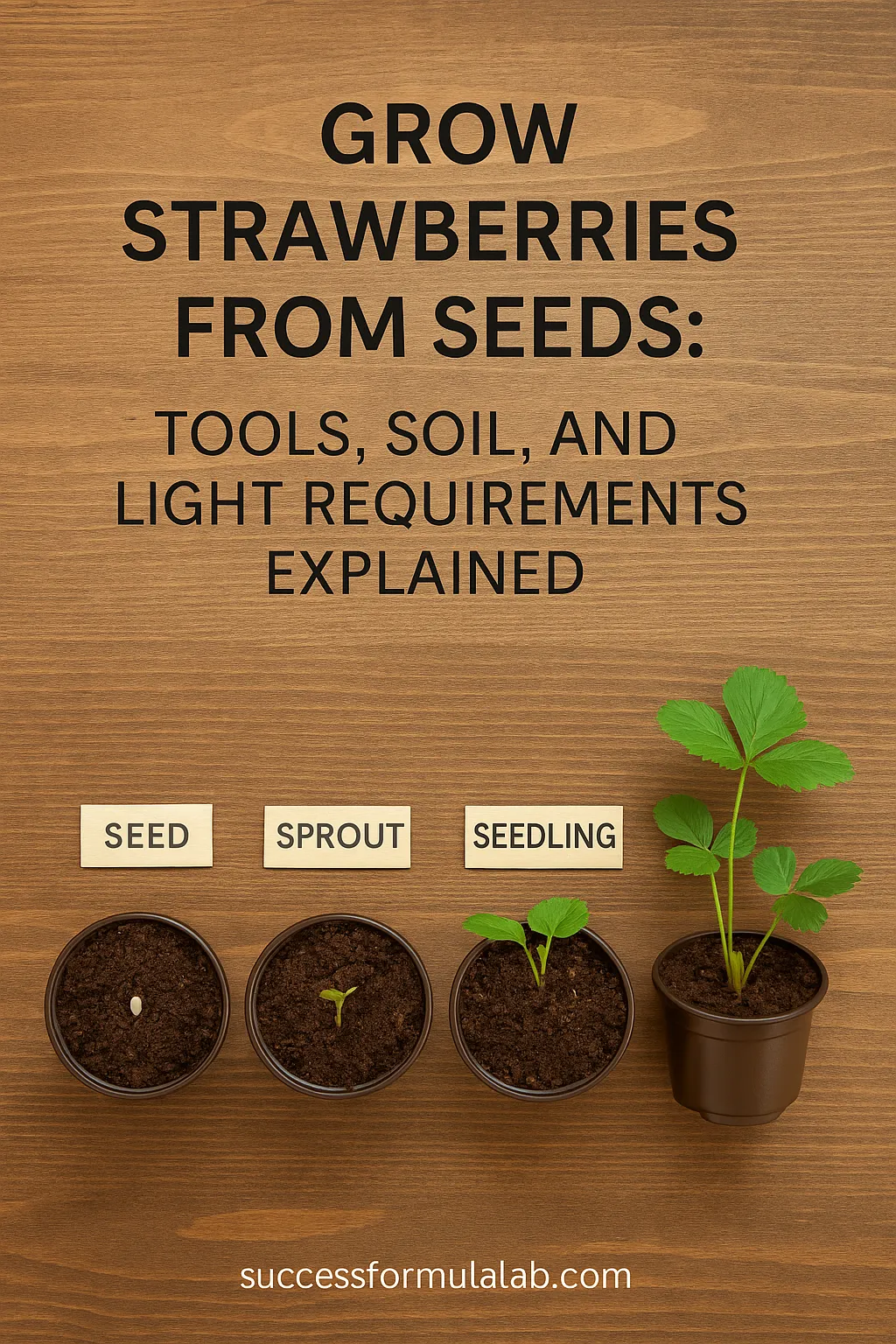
Key Advantages:
-
Broader selection of varieties – Choose from rare, heirloom, or alpine strawberries you won’t find in stores.
-
Stronger root systems – Plants adapt better to your environment when they start there.
-
Cost-effective – A single packet can yield dozens of plants.
-
Greater control – You manage every phase, from germination to harvest.
Essential Tools for Starting Strawberry Seeds
You don’t need a greenhouse or a commercial setup to succeed—just a handful of focused tools to give your seeds the best shot.
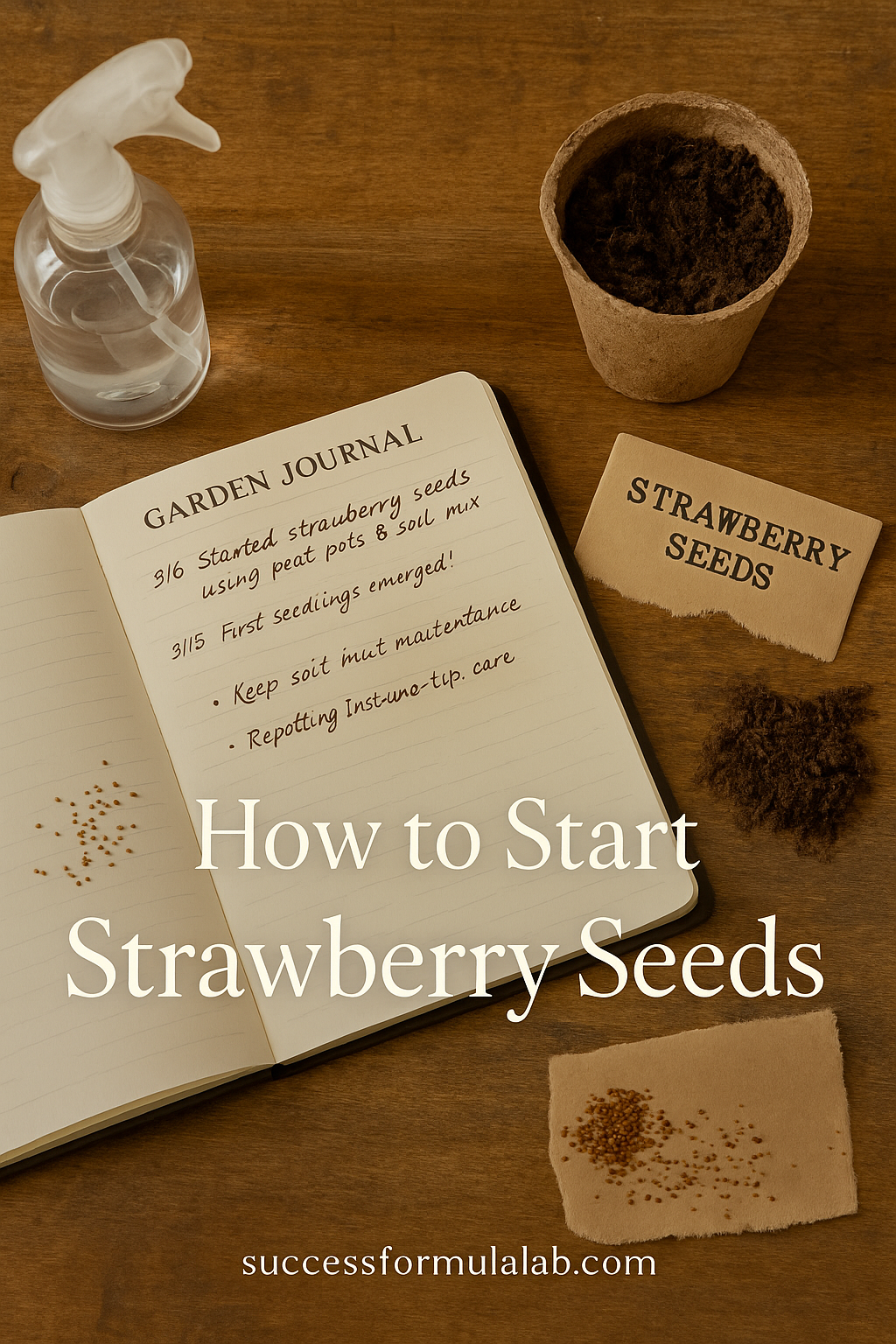
Must-Have Supplies:
-
Seed trays or cell packs for germination
-
Biodegradable pots for easy transplanting
-
Seed-starting mix that’s light and well-draining
-
Spray bottle for gentle watering
-
Grow lights or a sunny window (12–16 hours of light per day)
-
Humidity dome to maintain moisture during germination
-
Labels and garden journal to track progress
Helpful Additions:
-
Heat mat to boost germination in cooler homes
-
Small fan to improve airflow and reduce fungal issues
-
Thermometer/hygrometer to monitor temperature and humidity
| Tool | Purpose | Best For |
|---|---|---|
| Grow Lights | Promote healthy growth | Low-light spaces |
| Heat Mat | Warm soil for faster germination | Cold climates |
| Misting Bottle | Prevent soil disturbance | Seed starting phase |
| Humidity Dome | Retain moisture for germination | Early stages |
Choosing the Right Soil for Strawberry Seedlings
Strawberries need a clean, nutrient-balanced environment to sprout and thrive. Regular garden soil is often too heavy and prone to disease.
What to Look For:
-
Lightweight, sterile seed-starting mix
-
Well-draining but moisture-retentive
-
Slightly acidic pH: 5.5 to 6.5
Easy DIY Mix:
| Ingredient | Role in Growth |
|---|---|
| Peat Moss | Retains moisture |
| Perlite | Improves drainage and airflow |
| Vermiculite | Supports healthy root development |
Hold off on fertilizing until the seedlings develop their first true leaves. Overfeeding too early can burn delicate roots.
Getting Light Right for Strong Strawberry Growth
Light plays a critical role, not just during germination but throughout the seedling stage.
What You Need to Know:
-
Seeds need light to germinate—don’t bury them
-
After sprouting, aim for 12–16 hours of light daily
-
Keep grow lights 2–3 inches above the seedlings
| Light Source | Pros | Cons |
|---|---|---|
| Natural Sunlight | Full-spectrum, free | Unpredictable timing |
| LED Grow Lights | Energy-efficient, reliable | Initial cost |
| Fluorescent Bulbs | Affordable, decent spectrum | Shorter lifespan |
Rotate seed trays every few days to ensure even growth, and consider using reflective materials to maximize light exposure.
How to Grow Strawberries from Seeds (Step-by-Step)
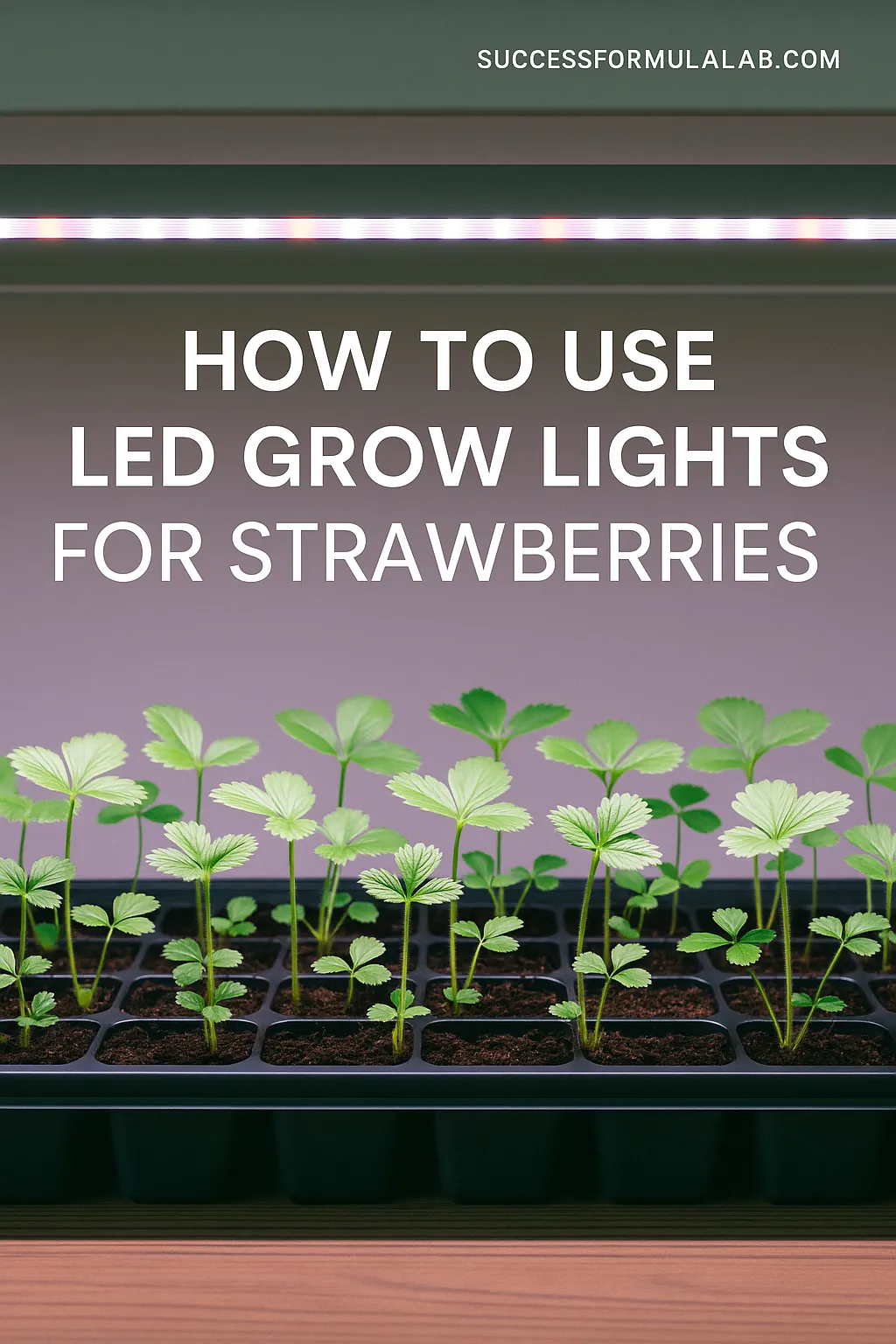
-
Cold stratify seeds: Place in a damp paper towel, seal in a bag, and refrigerate for 2–4 weeks.
-
Prepare trays: Fill with moistened seed-starting mix.
-
Sow seeds: Surface-sow without covering. Press gently.
-
Cover trays with plastic wrap or humidity dome.
-
Provide warmth: Ideal soil temp is 65–75°F (18–24°C).
-
Wait for germination: Can take 1–6 weeks.
-
Provide light as soon as sprouts emerge.
-
Thin seedlings: Keep the strongest, clip the weakest.
-
Transplant when 2–3 sets of true leaves appear.
If you’re serious about turning your garden into a reliable source of fresh, homegrown food, you’ll love the step-by-step strategies in this self-reliance gardening guide. It’s perfect for anyone looking to create a productive, low-maintenance backyard system that works with nature, not against it.
Avoiding Common Mistakes
Even experienced gardeners face a few speed bumps with strawberries from seed. Here are the most common problems and how to avoid them:
-
No germination? Seeds may need stratification or more light.
-
Seedlings too tall and thin? Your light source may be too far away.
-
Mold issues? Improve airflow and avoid overwatering.
-
Stalled growth? Wait to fertilize until true leaves appear.
Small adjustments can make a big difference in your results.
Unlock the Full Potential of Your Backyard
Growing strawberries from seeds is only the beginning. If you’re excited by the idea of producing your own food, conserving resources, and relying less on grocery stores, it’s time to think bigger.
The Self-Sufficient Backyard is a highly practical guide for transforming your yard into a productive homestead. Whether you live in a suburban neighborhood or a rural setting, you’ll learn how to:
-
Grow fruits and vegetables year-round
-
Build compost systems and capture rainwater
-
Reduce waste and lower your grocery bills
-
Live more independently with less stress
Take the next step toward true garden independence and discover what your land can really do.
FAQ – Grow Strawberries from Seeds
Can I grow strawberries from seeds indoors?
Yes. With proper lighting and moisture, indoor seed-starting is ideal for strawberries.
Do strawberry seeds need cold stratification?
Yes, most varieties require a cold treatment of 2–4 weeks to germinate reliably.
What kind of soil is best for strawberry seedlings?
Use a light, sterile seed-starting mix. Avoid heavy, nutrient-rich garden soil early on.
How much light do strawberry seedlings need?
They thrive with 12–16 hours of light daily. Use grow lights or a sunny south-facing window.
How long does it take to get fruit from strawberry seeds?
On average, you can expect fruit in 5–6 months after germination, depending on the variety.
Start Your Growing Journey Today
Every sweet, sun-warmed strawberry starts with a tiny seed and the right care. With the tools, soil, and lighting dialed in, you’re ready to turn those seeds into a thriving patch of berries. Don’t rush it—this is a process of patience and reward. And as your plants grow, so will your confidence in gardening.
Want to go even further? Let your strawberry success inspire a bigger transformation. With the right guide, your backyard can do more than feed you—it can free you.
Explore The Self-Sufficient Backyard and unlock the full potential of what your space can become.

